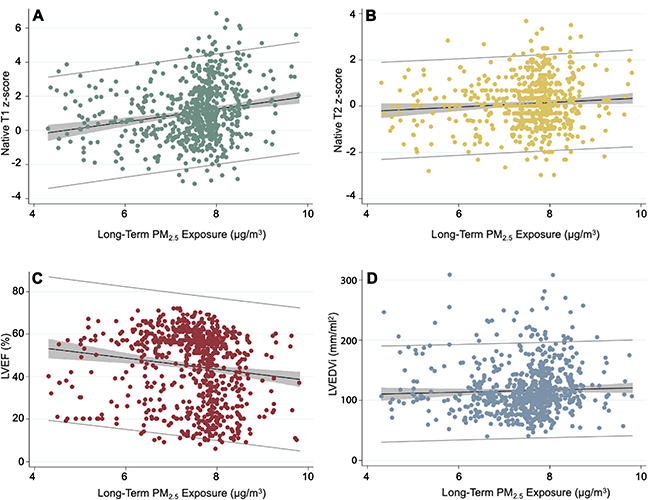Exposure to Air Pollution May Cause Heart Damage
Radiologists play important role in uncovering environmental effects on patient health

Researchers using cardiac MRI have found that long-term exposure to air pollution is associated with early signs of heart damage, according to a study published in Radiology. The research indicates that fine particulate matter in the air may contribute to diffuse myocardial fibrosis.
There is a large body of evidence linking poor air quality with cardiovascular disease, the leading cause of death worldwide. However, the underlying changes in the heart resulting from air pollution exposure are unclear.
“We know that if you’re exposed to air pollution, you’re at higher risk of cardiac disease, including higher risk of having a heart attack,” said the study’s senior author Kate Hanneman, MD, MPH, from the Department of Medical Imaging at the Temerty Faculty of Medicine, University of Toronto and University Health Network in Toronto. “We wanted to understand what drives this increased risk at the tissue level.”
Dr. Hanneman and colleagues used cardiac MRI to quantify myocardial fibrosis and assess its association with long-term exposure to particles known as PM2.5. At 2.5 micrometers in diameter or less, PM2.5 particles are small enough to enter the bloodstream through the lungs. Common sources include vehicle exhaust, industrial emissions and wildfire smoke.
The researchers wanted to evaluate the effects of air pollution on both healthy people and those with heart disease, so the study group included 201 healthy controls and 493 patients with dilated cardiomyopathy.
Higher long-term exposure to fine particulate air pollution was linked with higher levels of myocardial fibrosis in both the patients with cardiomyopathy and the controls, suggesting that myocardial fibrosis may be an underlying mechanism by which air pollution leads to cardiovascular complications. The largest effects were seen in women, smokers and patients with hypertension.

Scatterplots show the relationship between long-term exposure to fine particulate matter with 2.5-µm or smaller aerodynamic diameter (PM2.5) and cardiac MRI parameters in all patients, including (A) native T1 z score, (B) native T2 z score, (C) left ventricular ejection fraction (LVEF), and (D) left ventricular end-diastolic volume indexed to body surface area (LVEDVi). Linear regression lines are shown in black, 95% CIs in gray shading, and 95% prediction intervals in blue. Each 1-µg/m3 increase in 1-year mean ambient PM2.5 exposure was associated with a 0.38 higher native T1 z score (β coefficient: 0.38; 95% CI: 0.24, 0.51; P < .001).
https://doi.org/10.1148/radiol.250331 ©RSNA 2025
Air Pollution Is a Cardiovascular Risk Factor
The study adds to growing evidence that air pollution is a cardiovascular risk factor, contributing to residual risk not accounted for by conventional clinical predictors such as smoking or hypertension.
“Even modest increases in air pollution levels appear to have measurable effects on the heart,” Dr. Hanneman said. “Our study suggests that air quality may play a significant role in changes to heart structure, potentially setting the stage for future cardiovascular disease.”
Knowing a patient’s long-term air pollution exposure history could help refine heart disease risk assessment and address the health inequities that air pollution contributes to both in level of exposure and effect. For instance, Dr. Hanneman said, if an individual works outside in an area with poor air quality, health care providers could incorporate that exposure history into heart disease risk assessment.
The air pollution exposure levels of the patients in the study were below many of the global air quality guidelines, reinforcing that there are no safe exposure limits.
“Public health measures are needed to further reduce long-term air pollution exposure,” Dr. Hanneman said. “There have been improvements in air quality over the past decade, both in Canada and the United States, but we still have a long way to go.”
In addition to illuminating the links between air pollution and myocardial fibrosis, the study highlights the important role radiologists will play in research and clinical developments going forward.
“Medical imaging can be used as a tool to understand environmental effects on a patient’s health,” Dr. Hanneman said. “As radiologists, we have a tremendous opportunity to use imaging to identify and quantify some of the health effects of environmental exposures in various organ systems.”
For More Information
Access the Radiology article, “Association between Long-term Exposure to Ambient Air Pollution and Myocardial Fibrosis Assessed with Cardiac MRI.”
Read previous RSNA News stories about climate change: